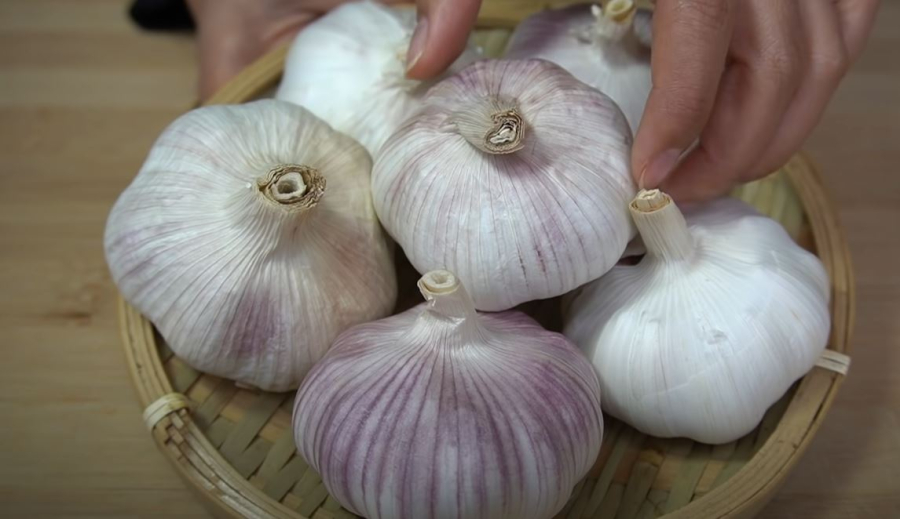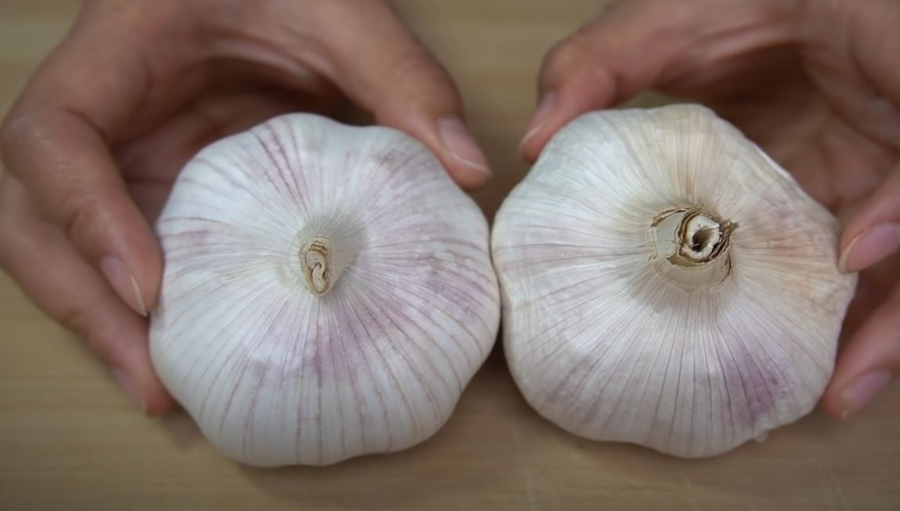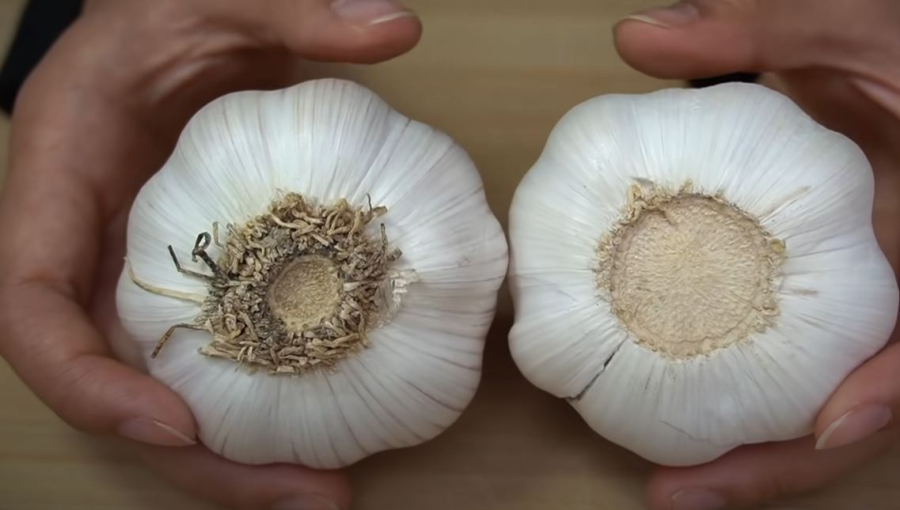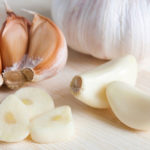Choosing the Right Garlic: White or Purple Skin?
When it comes to flavor, white-skinned garlic tends to have a higher moisture content and a milder spiciness. This type of garlic is better suited for those who don’t like the strong taste of garlic. White garlic is also a better choice for raw consumption as it is not overly pungent or spicy, making it quite palatable.
On the other hand, purple-skinned garlic is usually drier and less moist. This type of garlic has a more intense flavor than white garlic, making it ideal for stir-frying and cooking. Additionally, purple garlic is also known for its antibacterial and anti-inflammatory properties.

Purple or White Garlic: Which Is the Better Choice?
In terms of nutritional value, both purple and white-skinned garlic are packed with essential nutrients such as protein, fat, vitamins, and minerals. However, purple garlic typically contains higher levels of anthocyanin, a powerful antioxidant that protects cells from damage caused by free radicals. Purple garlic also contains a capsaicin-like compound called propylene sulfide, which has antibacterial and antiparasitic properties, helping to prevent common illnesses.
Garlic offers numerous health benefits, but it should be consumed in moderation. Excessive garlic intake can irritate the digestive tract, leading to bloating and diarrhea. Additionally, garlic can also cause bad breath.
Things to Consider When Buying Garlic
– Inspect the Garlic Cloves’ Ends
When purchasing garlic, take a close look at the ends of the cloves to determine if they are old or dried. Older garlic, which has been sun-dried, tends to last longer and has a more robust flavor. To differentiate between young and old garlic, examine the cut end of the clove, which is where the garlic was harvested.

Pay Attention to the Ends of the Garlic Cloves
If the end of the clove has multiple layers of skin and no visible holes, it indicates that the garlic was harvested too early and is not fully mature. This type of garlic will have a less intense flavor compared to older garlic.
On the other hand, if the end of the clove has a thin, papery skin with visible holes, it suggests that the garlic is older, more nutritious, and has a more robust flavor.
– Check the Garlic’s Roots

Inspect the Roots for Freshness
Flip the garlic over and inspect the roots. Fresher garlic usually has a fuller set of roots. These roots help maintain the moisture and nutrient content of the garlic clove. Garlic that has been trimmed of its roots will lose moisture more quickly, making it harder to store, and it may become soft and withered.
– Look for Sprouts
When buying garlic, check if the cloves have started to sprout. Garlic stored in a humid environment with ample light tends to sprout quickly. While sprouted garlic is still usable, its nutritional value and flavor are significantly reduced. Additionally, sprouted garlic doesn’t last as long because the sprouts continue to grow, causing the cloves to shrink.
– Firmness and Integrity of the Garlic Cloves

Avoid Cracked or Damaged Garlic Cloves
When purchasing garlic, carefully inspect each clove. Look for intact, unblemished cloves without cracks, dents, or black spots. The ideal garlic clove should feel firm and solid, with no signs of bruising or softening. Soft or misshapen garlic indicates a loss of nutrients and possible deterioration. A plump, full-skinned clove will retain its freshness and flavor for a more extended period.
How to Effectively Treat Fishbone Issues at Home
Everyone loves feasting on the deliciousness of fish during the holidays. But, unfortunately, choking on fish bones is an unavoidable issue that may lead to devastating consequences if left unattended for a prolonged period. Let’s see how Dien May Xanh can help us out when fish bones get stuck in our throat.



































